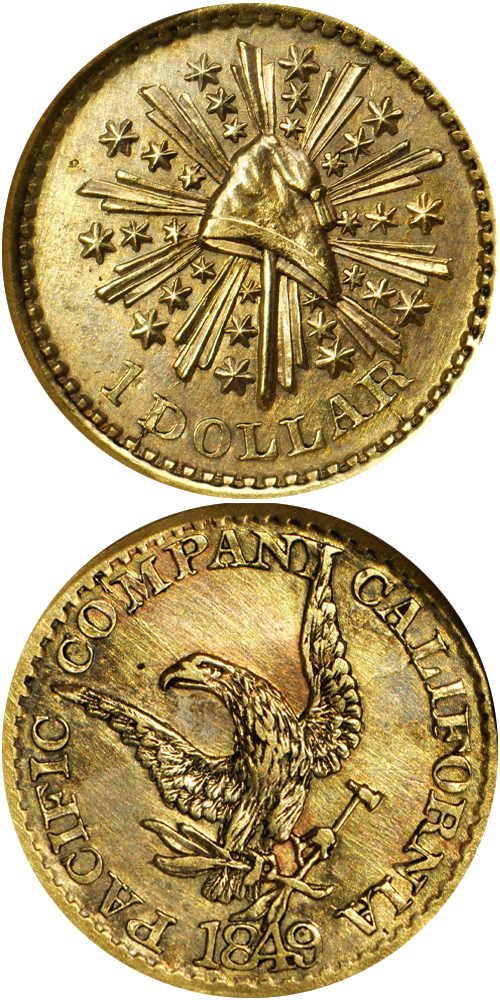1849 Pacific Company $1.00
K-Unlisted
Only three examples of this legendary rarity are known to exist, one of which was stolen in 1967 and has since been lost to the numismatic community.
Since the turn of the twentieth century, this specimen was originally thought to be a gilt silver pattern and was listed as such until 2002 when it was suspected to actually be struck in a somewhat lower grade gold alloy. The coin was then certified by NGC and confirmed to be gold, only the second confirmed Pacific Company $1 piece so identified.
The two currently available specimens were given metallurgic tests and were found to have wildly differing purity levels. The discovery piece was found to be comprised of 64.5 % gold, 16.1% silver, 8.9% copper, 5.3% silicon, 4.0% aluminum, and 1.1% iron while this piece is 72.2% gold, 16.8% silver, and 11.0% copper. This is consistent with naturally occurring unrefined California gold found at differing locales. Such varying purity was later accepted as normal with the Period I fractional gold coins that started to be produced by local jewelers around 1853, though by then these served more as a token currency unlike what was expected to be a dollar's worth of precious metal just a few years earlier.
The three gold pieces known only survived due to pure circumstance; the New Bethlehem coin was no doubt only preserved for posterity because it was considered a souvenir at the time and incorporated into jewelry rather than be sold as scrap gold and end up in a crucible. Today only three $1 gold coins are known, of which only two are traceable.
The example to the left was sold by Stack's Bowers Galleries in August 2019 ANA Auction, where it realized $264,000.






